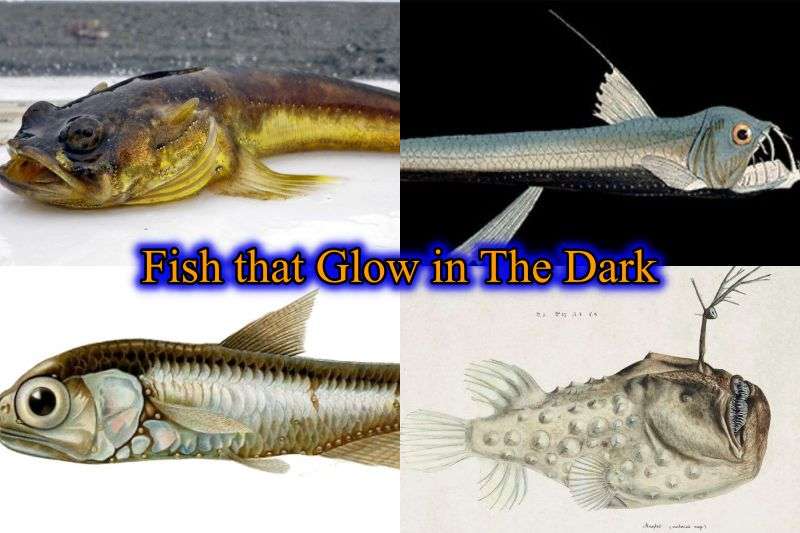Water is a territory that contains a lot of mysteries and has been barely discovered in its entirety. The unique beings that lurk in the deep waters are as strange as they are fascinating. One such fascinating beings are the fish that glow in the dark.
The phenomenon of a being glowing in the dark is known as bioluminescence. It is when a living thing produces light inside itself, either through enzymes or other chemical reactions. In this article, we’ll see 10+ unbelievable fish that glow in the dark.
Fish That Glow in the Dark
1) Deep Sea Anglerfish
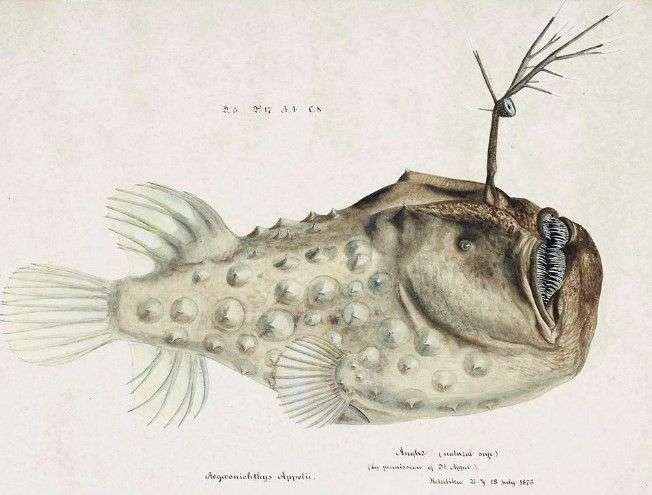
Let’s start our list with the deep sea anglerfish. Anglerfish is one of the popular bioluminescent fish found in marine water.
There are various species of anglerfishes, distributed from shallow water to deep sea. Anglerfish is named so because of the Eska, which it uses in a fashion similar to how a fisherman fly-fishes.
Every species of anglerfish also has another thing in common: the Eska, which is a fleshy growth protruding from their heads.
It contains light-producing bacteria and causes it to glow in the dark. Anglerfish use this light to attract their prey towards them.
- Scientific Name: Ceratioidei sp.
- Size: 1 – 7 inches
- Location: Western Europe, eastern North America, Africa, East Asia
2) Black Dragonfish
Black dragonfish is another species of deep-sea fishes that glow in the dark. It’s also poisonous with very potent venom.
Black Dragonfish is bioluminescent, but unlike a lot of the other bioluminescent fish, it uses its glow to light its surroundings rather than attracting prey.
It lights the area to see and hunt. The light it emits almost falls in the infrared range and is barely visible to human eyes.
- Scientific Name: Idiacanthus atlanticus
- Size: male- 5 centimeters, female- 40 centimeters
- Location: subtropical marine water in the southern hemisphere
3) Chain Catshark
Chain catshark, also known as chain dogfish, is a biofluorescent shark. Its name is inspired by the chain-like patterns on its body. It comes out to feed and is very active at night.
Like others in the list, chain catshark glows in the dark, but it is due to fluorescence rather than bioluminescence.
Meaning it doesn’t produce light itself but emits light when exposed to external light sources. Chain catshark glows green when it comes to contact with light.
- Scientific Name: Scyliorhinus retifer
- Size: 4 – 20 inches
- Location: Northwest Atlantic, Gulf of Mexico, Gulf of Caribbean
4) Viperfish
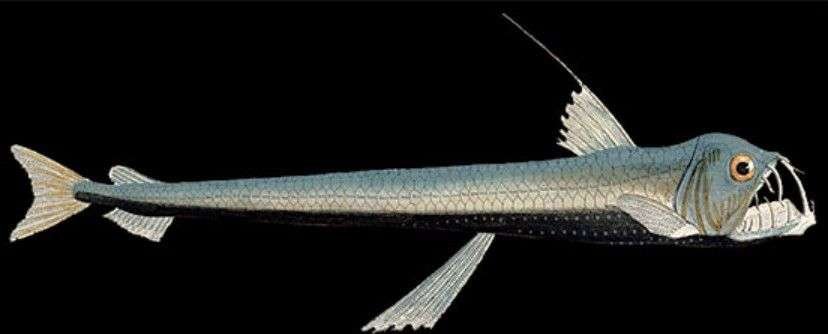
Viperfish dwell in the mesopelagic zone of the ocean. Its name comes from the long fangs protruding from its upper and lower jaw, similar to that of a viper.
Viperfish displays bioluminescence through a light organ located at the end of the elongated dorsal fin ray.
It also has photophores along its whole body. Viperfish use light to lure their prey and also to communicate with their potential mate.
- Scientific Name: Chauliodus sp.
- Size: Up to 30 centimeters (12 inches)
- Location: Tropical and temperate waters worldwide at depths up to 9,000 feet
5) Lanternfish
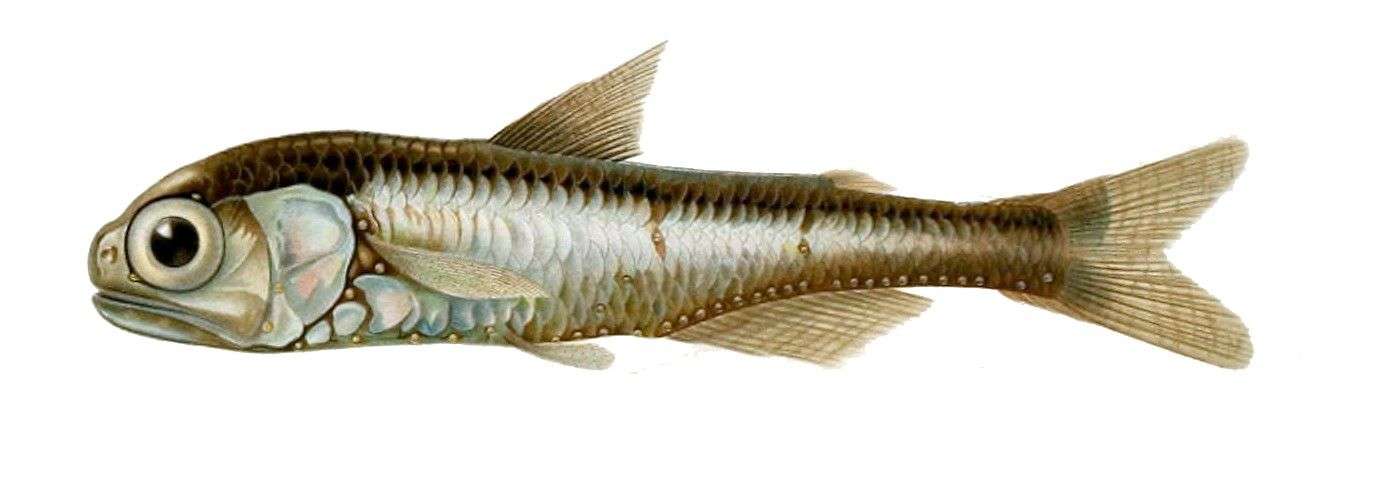
Lanternfish is a small deep, water fish known for its bioluminescence, which is the reason for its name. It is also one of the most abundantly found glowing fishes. It stays at the bottom during the day but comes to shallow water at dusk to feed on zooplankton.
Lanternfish has two special pouches under its eyes which contain bioluminescent bacteria that glow in the dark. It uses its glowing property to protect itself from predators.
By glowing in the dark, they confuse their predators and mask themselves at the bottom.
- Scientific Name: Family Myctophidae
- Size: 2 – 30 centimeters
- Location: Widely distributed all over the world; commercially found in South Africa, the sub-Antarctic, and the Gulf of Oman
6) Kitefin Shark
The Kitefin shark is the largest bioluminescent vertebrate on record. It has photophores consisting of a single photocyte cell. The photophores generate light that is directed downwards ventrally.
The luminescence is assumed to be either for illuminating the sea floor when it is hunting for food or as a method of counter-illuminance to camouflage itself while approaching prey.
Some common names of the kitefin shark include black shark and darkie Charlie.
- Scientific Name: Dalatias licha
- Size: 2.5 – 5.2 feet
- Location: East coast of Florida, northern Gulf of Mexico, Georges Bank, near the southern Bahamas in the western Atlantic, North Sea south of Cameroon, the western Mediterranean Sea
7) Marine Hatchetfish
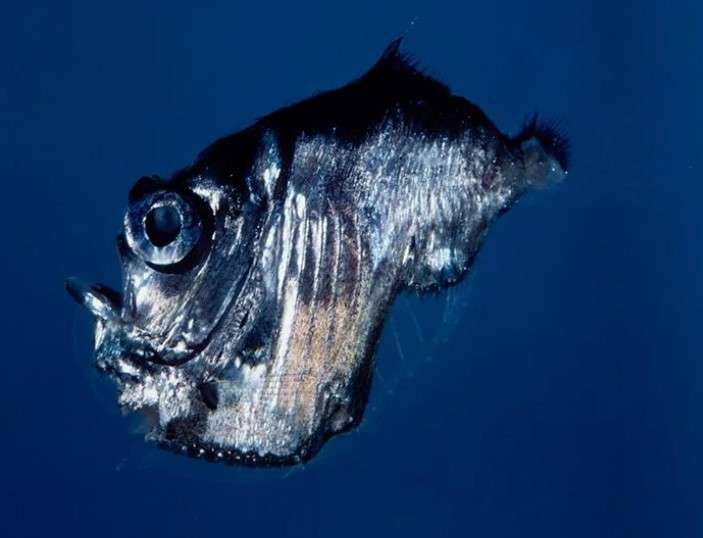
Marine hatchetfish is another fish on our list that glows in the dark. The fish has an unusual shape, like a hatchet, leading to its name.
Marine hatchetfish lurks in the deep sea and exhibits bioluminescence through the photophores it has along its belly. The photophores produce light through a chemical reaction. The light allows the fish to hide from the predator by over-illumination.
- Scientific Name: Sternoptyx obscura
- Size: Up to 3 inches
- Location: Temperate and tropical seas worldwide
8) Dwarf Lantern Shark
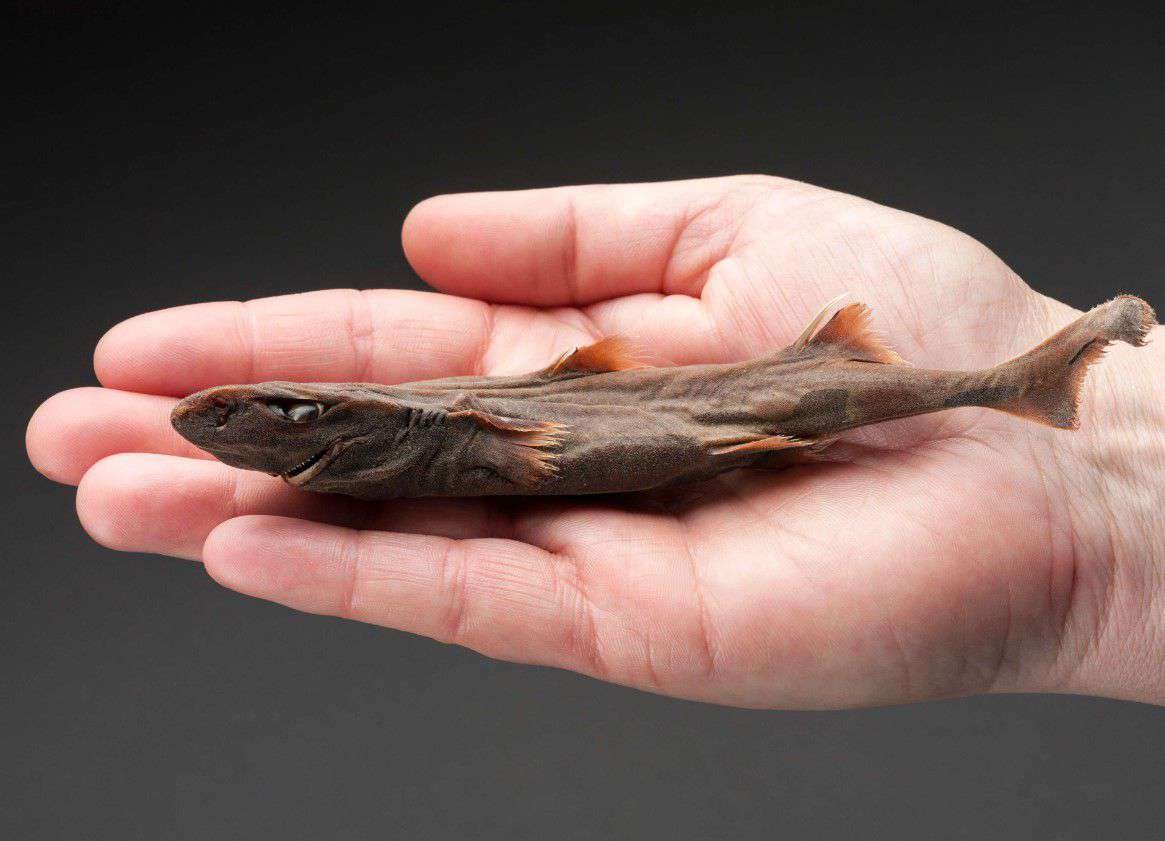
The dwarf lanternshark is the smallest shark in the world. It’s also very rare to come across, and thus, very little is known about them.
Dwarf lanternshark has photophores along the ventral side of its body and fins. The light from the photophores helps it to camouflage itself during feeding and acts as a lure to prey upon smaller animals.
- Scientific Name: Etmopterus perryi
- Size: 20 centimeters (8 inches)
- Location: Upper continental slopes off Venezuela and Colombia
9) Midshipman Fish
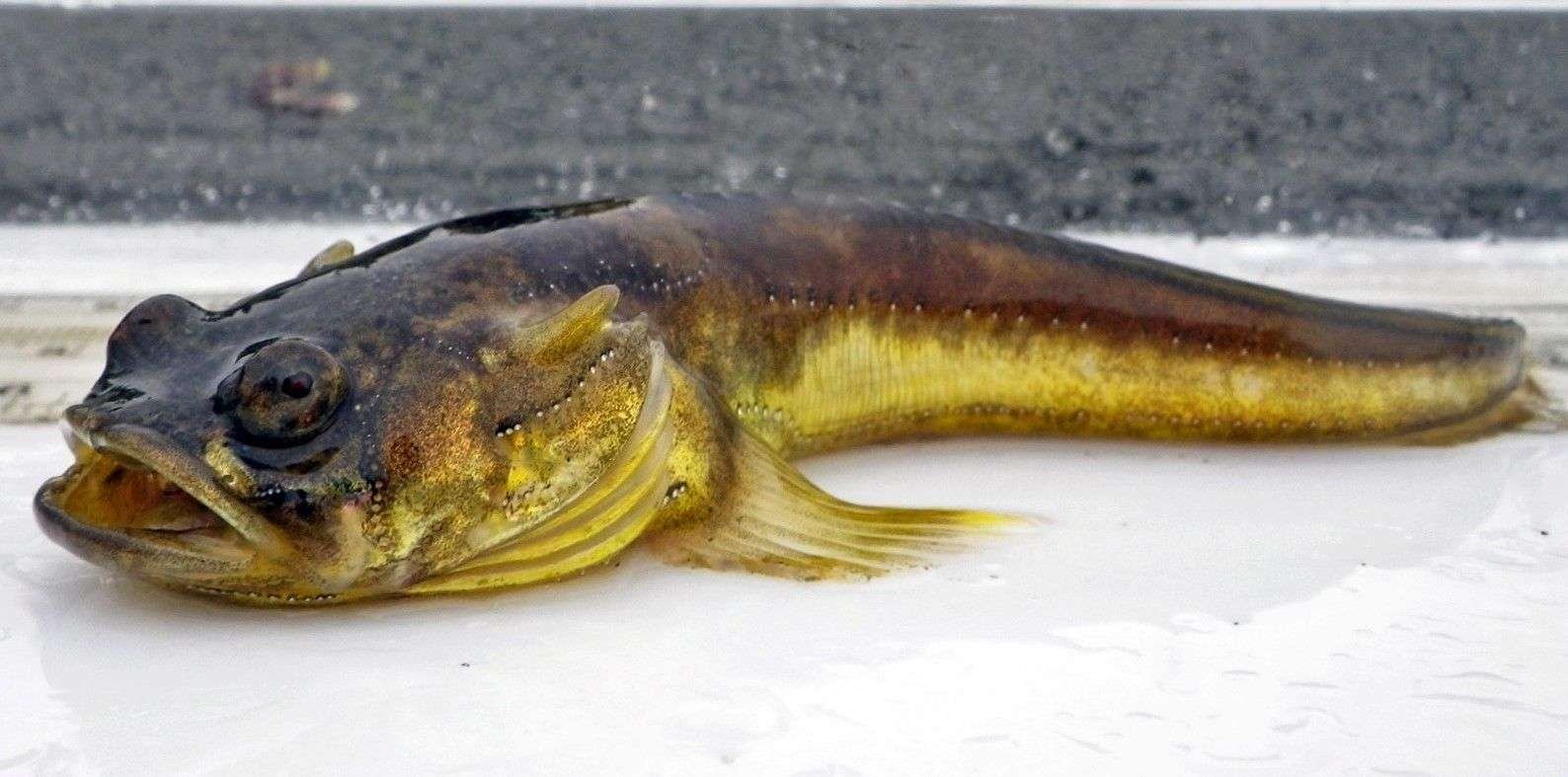
Midshipman fish is known for the distinct patterns of photophores on its body that emit light in the dark. The positions of the photophores make them look like the buttons of a midshipman uniform, thus its name. The strange patterns of the photophores and their glow act as a lure for its prey.
Midshipman fish is also notable for its auditory mating ritual. The male fish makes strange loud noises to attract the female, while the female fish only responds with grunts during mating.
- Scientific Name: Porichthys sp.
- Size: 38 centimeters (15 inches)
- Location: Eastern Pacific Ocean along the coast of Sitka, Alaska, Magdalena Bay in southern Baja California
10) Pineapplefish
Pineapplefish is another bioluminescent fish whose name relates to its pineapple-like appearance. It’s also known as the Mailfish and is considered endangered.
Pineapplefish has two photophores on its lower jaw. The photophores contain bioluminescent bacteria that produce light. Its glow helps illuminate the surroundings as well as communicate.
- Scientific Name: Cleidopus gloriamaris
- Size: 22 centimeters (8.7 inches)
- Location: East and west coasts of Australia
11) Flashlight Fish
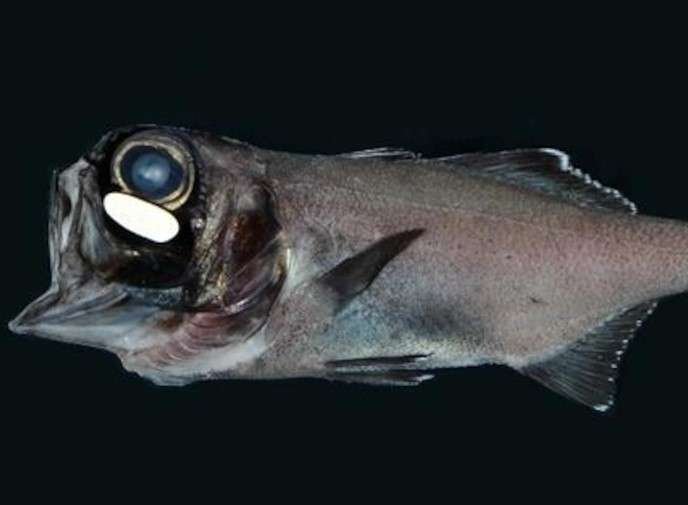
Flashlight fish is found in the deep sea where light cannot reach. The fish has a special organ under their eyes containing bioluminescent bacteria, making them glow in the dark. They can shut off the light by covering the organ with a dark lid.
Flashlight fish uses its glow to attract prey, evade predators, and communicate with the rest of the school.
- Scientific Name: Anomalops katoptron
- Size: Up to 14 inches (35.56 centimeters)
- Location: Pacific Ocean
12) Cookiecutter Shark
Cookiecutter shark, also known as cigar shark, is a parasitic shark feeding off larger animals without killing them. Its name comes from its attack wounds that look like holes made from a cookiecutter.
Cookiecutter shark has light organs all over the body. They generate blue light that glows along their belly except beneath the jaw. The shark uses its bioluminescence as camouflage and to communicate.
- Scientific Name: Isistius brasiliensis
- Size: 42 – 56 centimeters (16.5 – 22 inches)
- Location: Temperate and tropical oceanic basins
With this, we conclude our list. There is a lot of fish in the deep waters still unknown to us that have strange and unbelieve features like the fish from this list. Let us know what you think about our article, and if you like it, don’t forget to check our other articles.
Also Read:
Anamika has a fascination with all living things. Being a Zoology student, she loves to know new interesting things about animals. She’s also a very keen fan of manga and anime. Writing is her passion, and writing about her favorite things is her boost of serotonin.
